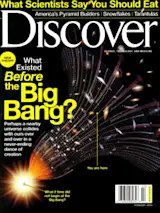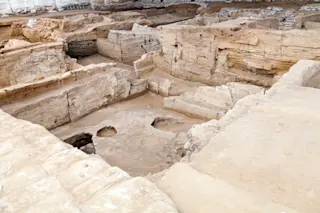Our early ancestors may have already grasped the importance of oral hygiene, claims anthropologist Leslea Hlusko of the University of Illinois at Urbana-Champaign. Paleontologists have long noted strange grooves near the gum line on dental remains dating back to Homo erectus, “but it was assumed they couldn’t be from tooth picking, because they never show up on contemporary human remains,” Hlusko says. She suspected that early humans simply used a different tooth-picking tool. To test the hypothesis, she spent eight hours rubbing baboon and human tooth samples with grass stalks, which, unlike wooden picks, contain hard deposits of abrasive silica. The grass created wear markings that matched those on the fossils. “I don’t see what else the grooves could be from,” she says. The grooves always have a diameter of about one-tenth of an inch—the width of a stalk of grass. The oldest remains showing the markings date back 1.8 million years. “That makes tooth picking the oldest human habit for which we have physical evidence,” Hlusko says.
Human Culture's (Dental) Roots
People have been cleaning their teeth far before the invention of the toothpick.
More on Discover
Stay Curious
SubscribeTo The Magazine
Save up to 40% off the cover price when you subscribe to Discover magazine.
Subscribe













